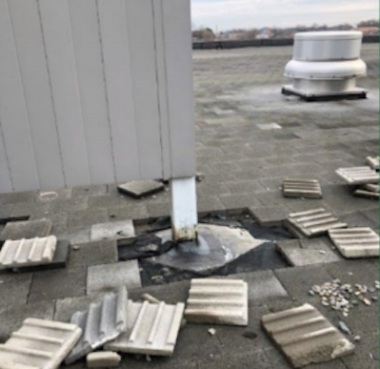The item on the agenda for the City Council work session “Life Cycle Planning” sounds like a social services issue or maybe something an insurance agent would talk about.
As it turns out, the “Life Cycle Planning” coming up at the Thursday, Aug. 26 work session has nothing to do with life except for the lifespan of inanimate objects.
The agenda leaves off a key word, the title of the report the City Council will discuss is “Facility Life Cycle Planning.” In other words the report is on the need and cost for the city to maintain city facilities and structures. The report is about roofs, heating and air-conditioning systems, elevators, flooring and other such items, not about planning for senior care.
Governments have a poor history when it comes to maintaining buildings and often decide to build new structures because buildings have been so poorly maintained that it would cost as much to repair them as to start over with a new building.
There is also the added incentive that when a new building is completed there is a ribbon cutting and the elected officials usually get their names on a bronze plaque in the entrance. Elected officials don’t get that kind of publicity when a roof is replaced.
According to the report by Engineering and Inspections Department Director Kenney McDowell, 67 percent of City of Greensboro occupied buildings are over 25 years old and the estimate for repairing the major components of those buildings through 2028 is $18.75 million.
One example given is the Central Library on North Church Street, which was built in 1998 and currently needs a new roof ($1.25 million), chillers ($365,000) and replacement of the original carpet ($300,000), for a total cost of $1,925,000.
The report notes that the current leaky roof caused the library to have to shut down after a storm in 2018 and also in 2018 the leaks caused an electrical fire. However, it is worth noting that neither the shutdown or the fire both caused by a leaky roof provided the needed impetus for the City Council to spend the money to replace the roof.
For those interested in sustainability, the report notes that adding solar panels to the roof would cost an additional $2 million to $3 million.


. . . . .replacement of the original carpet ($300,000).
Why in the world would you want to install carpet these days? Properly treated tile or concrete floors would last a lifetime, wouldn’t need to be steam-cleaned, etc. Yet one more thing the City has yet to think about in the long term sustainability of facilities.
Exactly. No one THINKS anymore. There should be hard surfaces like at an airport and seating like they have at bus terminals. They need to replace the roofs of any building that needs it and then put in solar panels. Any building needs basic repairs done to keep them working efficiently. County schools should have their parking covered so solar panels could be installed making each facility energy independent (which I told them years ago has been done in Petaluma, CA). All this is far cheaper than building new facilities. Not doing so is not only negligent but shows they are only interested in providing building contracts for their friends. As a former local government employee, it makes for an uncomfortable working environment. As a taxpayer, it makes me angry.